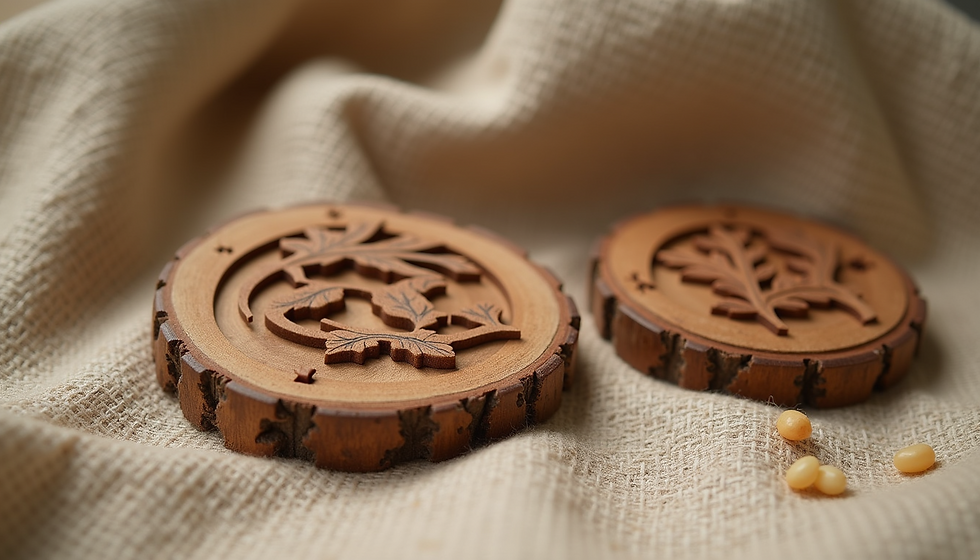Antique Printmaking
- fischerartprints
- Apr 21, 2021
- 3 min read
I grew up surrounded by antique prints. My mother’s art gallery, filled with antique and vintage treasures, was part of every day of my life. When I was old enough to work there on weekends, words like “copperplate” and “lithograph” quickly became part of my vocabulary.
I now bring that background to the various original antique prints I work with at Fischer Arts. I love seeing intricate copperplate engravings of plants and animals, as well as vibrant chromolithographs depicting mysterious creatures.
They are beautiful images made by naturalists and scientist, dating as far back as the 1700 and 1800’s; people who explored the world and documented the natural beauty around them.
It is a snapshot in time.
While the terms used to describe these original pieces are second nature to me, they are probably new to many others. I thought I would take a few minutes to describe the different types of antique nature prints we have at Fischer Arts.
Let’s start with: Antique vs Vintage
Antique prints are at least 100 years old. Vintage is a little different; it refers to pieces that are 20-50 years of age or older. If ever in doubt, a date is included in the description for all of the original antique pieces of art at Fischer Arts.
Now onto: different types of prints:
Engravings:
An engraving is a picture made by printing an engraved printing plate. It is considered a “physical” process (as opposed to etching, for example, which requires chemicals).
The artist engraves the work onto the plate. Ink is then placed onto the engraved plate, and then wiped so that ink only remains in the engraved lines. That plate is pressed onto paper to produce the print of the image. Often engravings are colored by hand after the printing process is complete.
There are various types of engravings, based on the type of plate used. The antique engravings you will see at Fischer Arts include:
-Copperplate Engravings
Copperplate engraving, which involves engraving into a copper plate, started in the first half of the 15th century. This technique is labor-intensive and time consuming, and is a true art form.
The hand-coloring on copperplates is often antique - and the vibrancy, given the age, is quite incredible.
Copperplate engravings tend to have a warmer, softer feel. Most engravings at Fischer Arts dated before 1820 will be copperplate engravings.
-Steel Engravings
In the 1820s, steel replaced copper. Steel is a more resilient material and can be used many more times before showing signs of wear.
After 1820, the use of steel allowed for a level of detail not seen in previous engravings. Steel engravings came out sharp and defined, and were often left without additional color.
Other types of prints include:
Lithographs:
The technique of lithography was invented in Germany, and was common in the 1800s. Unlike engravings, the image is not etched or engraved on a plate. Instead the artist will draw on a flat (often limestone) plate with a waxy material. After completing the drawing, a solution is applied to the plate that is absorbed by the stone - but not the waxy drawing (based on the principle that grease and water don't mix). Thereafter, when ink is applied to the stone, the ink sticks to the wax. The stone is then pressed onto paper, and the print is created.
Early lithographs were often hand-colored.
However, later came a technique called Chromolithography,
which was a method for making multi-colored prints.
With chromolithography, each color is printed from a separate stone. The image is ultimately composed from those colors, and the product is unique and vibrant. This is the first technique being discussed that that allowed for true color printing.
Etchings:
Etchings were used in the printmaking process around the end of the 15th century. Unlike engraving (considered a “physical” process), etching is a chemical process. To product an etching, a metal plate is used and covered with a substance that is resistant to acid (called a "ground"). The artist “scratches” at that substance with an etching needle to make the image. Once complete, the plate is dipped into acid. The acid only affects the exposed metal, which leaves sunken lines in the plate. When ink is applied, it sinks into those lines. A damp piece of paper is then used with the plate to produce the etching.
Working with all of the antique nature prints at Fischer Arts is such a joy.
While I love these pieces, I am equally enamored of the contemporary work we have
- with more coming soon!
Shop:

























Comments